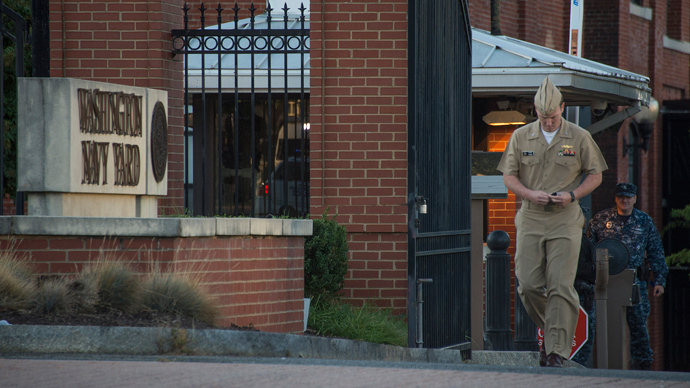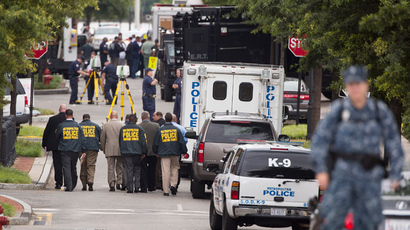Washington Navy Yard security weakened through cost-saving measures - report

With questions emerging about how Aaron Alexis, who killed 12 people at the DС Navy Yard, was overlooked by the access restriction system, it appears that the Navy had security lapses as it was trying to reduce costs.
"As a result, at least 52 convicted felons received routine
unauthorized installation access, placing military personnel at
increased security risk," TIME reported, citing federal
official, who had access the Department of Defense Inspector
General's report.
The audit, intended to determine if “the Navy Commercial
Access Control System [NCACS] is mitigating access-control risks
to Navy installations,” began in September 2012. The
results were expected sometime in September and now ironically
coincide with the attack which left 12 people dead and another
eight injured.
It was reported that Alexis had a secret clearance and a common access card (CAC).
Alexis’s security clearance was updated in July and approved by
military personnel. He had a government access security card that
would have allowed him entry into the Navy Yard and other
military facilities.
At the same time, regardless of the official report, McClatchy
Washington Bureau reporter James Rosen found out that the
Washington Navy Yard has had a history of major security lapses.
Previous reports cited poor entrance controls, video dead spots,
inadequate lighting, malfunctioning alarms and other problems.
The article cites James Atkinson, a former military intelligence
officer who now heads Granite Island Group in Gloucester, Mass.
According to Atkinson, the Navy hired his surveillance security
firm in 2009 to test newly installed electronic security gates
and other access controls inside Building 197, which houses the
Naval Sea Systems Command headquarters.
One the tests by Atkinson’s firm revealed that a tamper sensor
was not working because of a design defect, doors could be jammed
open with pieces of cardboard, “crisscrossed” video
cameras were pointed at one another. The facility had too few
cameras and bad lighting at night.
“The security there is extraordinarily poor,” Atkinson
told McClatchy Washington Bureau. “They need more cameras,
better door security, better lighting. The access controls were
appalling. The Washington Navy Yard has security that is below
the level of security you see at Harvard or MIT (the
Massachusetts Institute of Technology) or Boston University or
any other major campus.”
The report also cites an employee, who asked not to be
identified, complaining about weak security checks at the
facility.
“They’ll check your badge and they’ll check your car to make
sure it has a Naval District of Washington current sticker, but
you can drive through the base with a bazooka in your trunk and
they wouldn’t know,” the employee said. “You can drive in
with a ham sandwich, a banana and a pistol in your lunch bag, and
they don’t check.”
Meanwhile, while US authorities are still trying to piece
together exactly who Aaron Alexis was, it appears that since
August he had been undergoing treatment by the Veterans
Administration for serious mental illness. He had apparently been "hearing
voices", suffered from paranoia and a sleep disorder, AP
reported citing its sources.
He had run-ins with the law over shooting incidents in 2004 and
2010 in Fort Worth and Seattle and had been arrested at least
twice in the past. He was honorably discharged from the US Navy
reserve in 2011 despite a pattern of misconduct, Reuters
reported.













